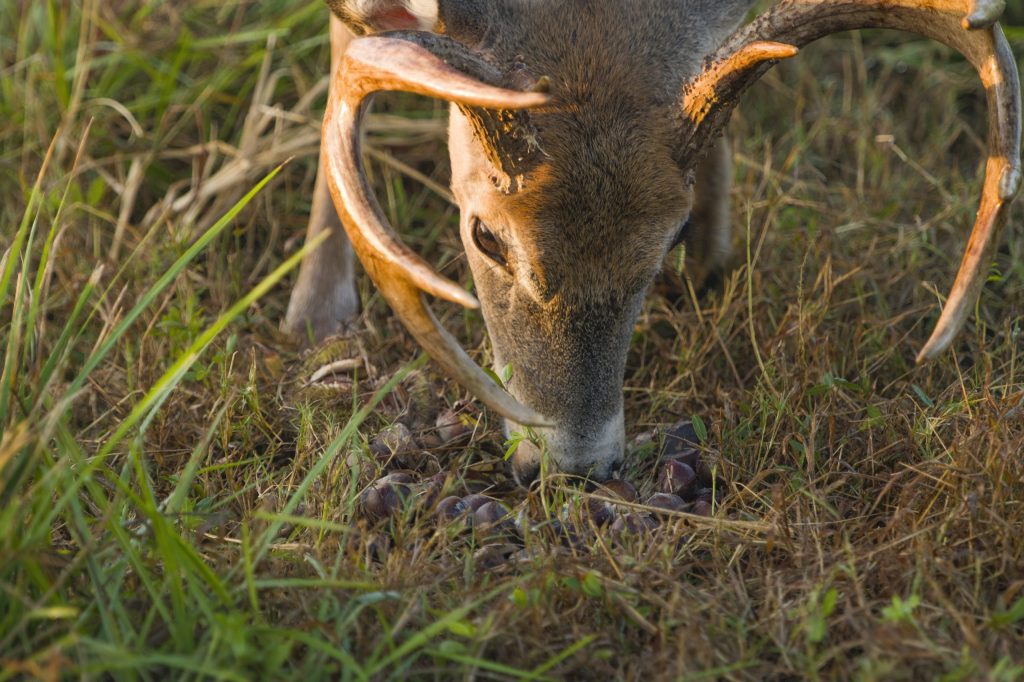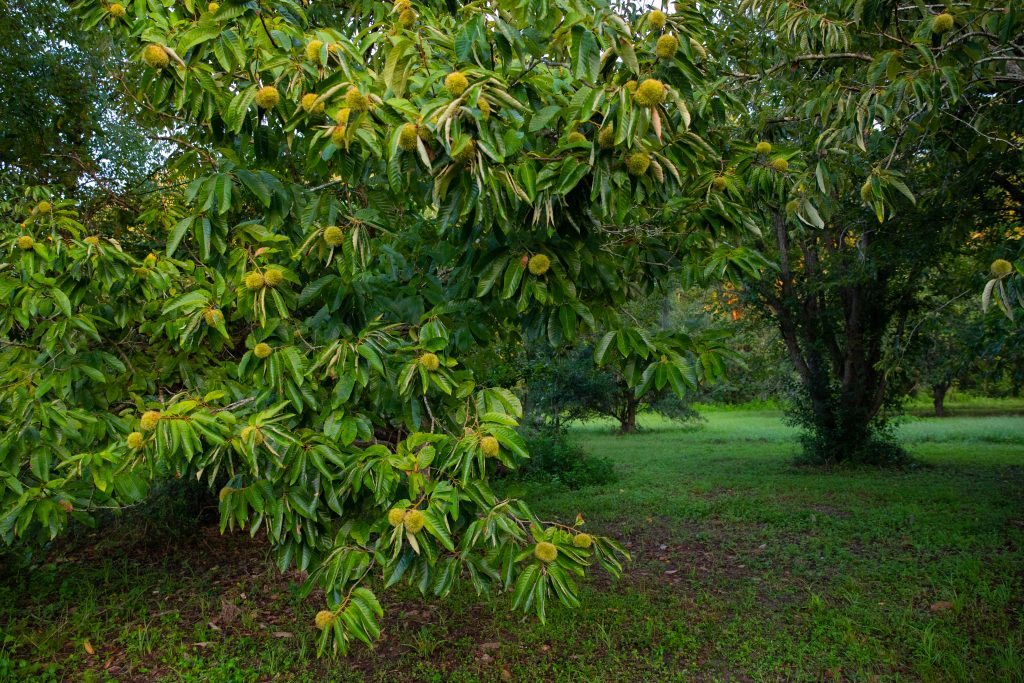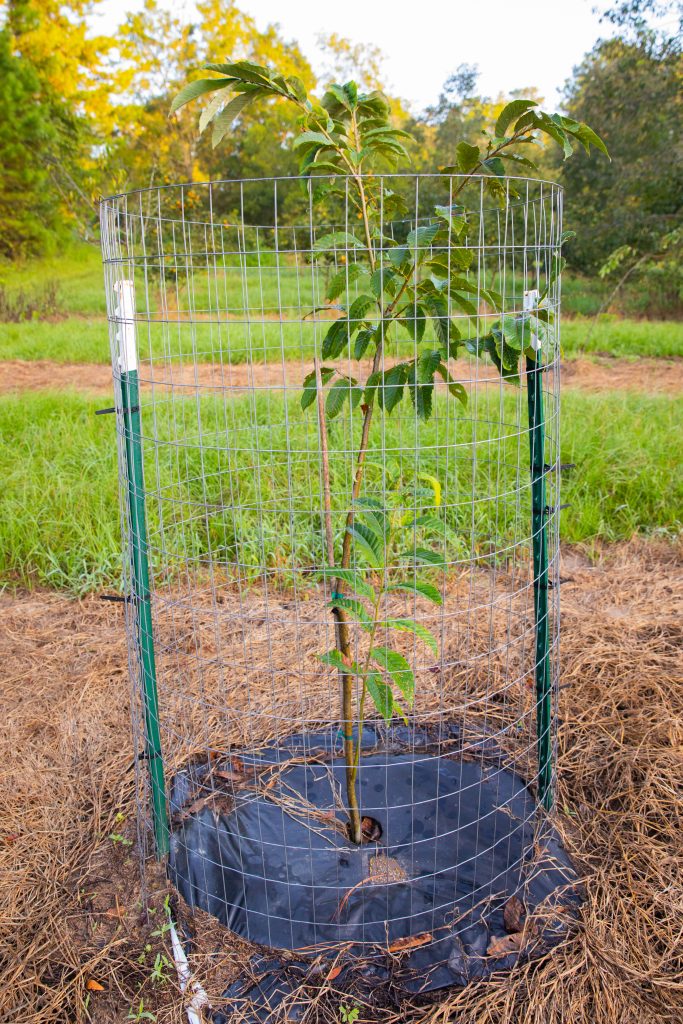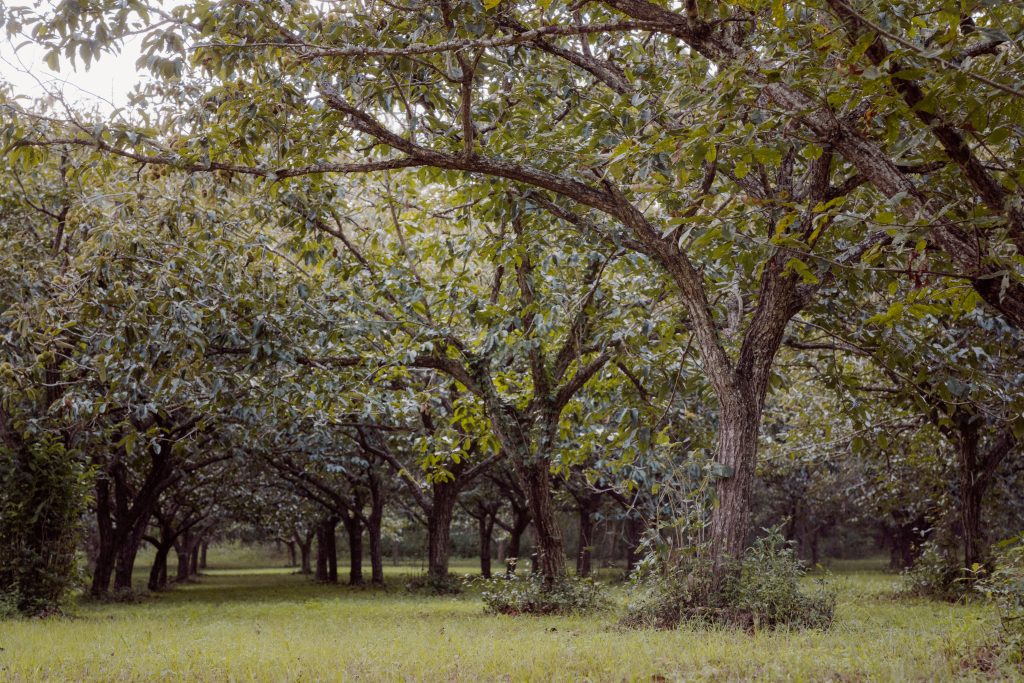Long ago, I discovered that clusters of oak trees are like a magnet to white-tailed deer when the first cool breezes arrive in September and those acorns begin to fall.
I learned the basics of early-season scouting and the necessity of finding which trees were dropping acorns. It became quickly apparent that deer had their preferences when it came to acorn type. They seemed to feed heavily on white oaks, followed by water oaks. But I quickly discovered that not all trees produce good crops each year, and some years they were scarce.
Several types of oaks called my hunting ground home, but after a few seasons, I learned that many acorns lay uneaten and that acorn production varied among the different species of oaks from year to year.
Predicting what sort of acorn crop will grace the forest floor each hunting season is challenging and takes a lot of footwork and a good pair of binoculars to detect the early blooms and buds sprouting in the canopy.

A quick study of the history of hardwoods in our part of the country indicates this was not always the case. Instead, I discovered another more prominent, sweeter alternative to our well-known acorns that once dominated the forest. Today we’re going to look into how to grow chestnut trees for deer and how doing this can help you attract and hold more deer on your property.
Managing Your Property for Deer
Hunting property management plans have often centered almost exclusively around food plots. While various warm and cool weather plots are a strategic component in most programs, more creative and comprehensive solutions are available.
Knowing the carrying capacity of a property and the various nutritional requirements for those deer is vital to any management strategy if your deer are to survive and thrive. In addition, ensuring deer have good bedding areas, safe zones, travel corridors, and water sources should also be part of the game plan.
Did you know that strategically planting more hardwood trees on a property is a management practice gaining momentum along the Eastern and Southeast parts of the US? Did you also know that chestnut trees for deer are one of the more popular choices for increasing hard mast production?
Chestnut Trees
Chestnut trees once dominated vast areas in the Eastern US, with some estimates of previous tree populations as high as four billion. These native species were among the forests’ tallest, most massive, and fastest-growing hardwoods.
Chestnuts once fed vast wildlife populations and contributed to rural agricultural economies that used them as food for themselves and their livestock until about 1900. However, over the next 40-50 years, 30 million acres of chestnut trees from Maine to Georgia and west to the Mississippi died.
A deadly blight from Asia decimated the American Chestnut and suddenly eliminated a critical food source for a vast segment of the wildlife and human population.
Dunstan Chestnuts
In the early 1950s, James Carpenter shipped a specimen from a chestnut tree he found growing in Ohio to his friend, Dr. Dunstan. He had discovered a chestnut tree that seemed to have survived the ill effects of the blight that decimated the others.
The story of one man’s efforts to create a disease-resistant hybrid cross between a surviving American Chestnut and various other blight-tolerant rootstocks resulted in a patented variety of hardy trees named after Dr. Robert T. Dunstan.

I reached out to Chestnut Hill Nursery to learn more about their efforts to reintroduce their fast-growing trees. Iain Wallace’s family began the nursery and patented the Dunstan species they feature among the many trees and plants they offer. These hybrid trees begin producing chestnuts in as little as three to five years.
Wallace spoke a little of the history of their nursery and what they have available for anyone wanting to use their Dunstan variety of trees as part of a broader wildlife management strategy.
Wallace shared a few things about where to buy their trees, what type of soil to plant them in, and how to care for them after planting. In addition, he explained that their website has information on finding local retailers and ordering directly from their nursery.
Their website provides a detailed history and planting guide for anyone interested in learning more about the Dunstan Chestnut story and its potential benefits for deer and other wildlife.
Wallace also shared that Chestnut Hill Nursery offers several planting packages that contain other varieties of hard and soft mast beneficial for wildlife.
He said one of their current money-saving offers includes a 10-tree bundle of ten Chestnut trees, ten grow tubes and stakes for each tree.
Another alternative is for buyers to purchase individual Dunstan trees at local retailers such as Walmart. She said their nursery ships two-year-old plants in three-gallon pots and three-year-old trees in seven-gallon containers
Planting Instructions
Wallace described their preferred strategy for anyone opting for the ten-tree package deal of chestnut trees for planting. He explained that several customers reported great success with growth and pollination by planting in a triangular, rounded, or oblong pattern with a maximum spacing of 50 feet between trees.
He also said that customers needed a well-thought-out plan when deciding on the location of their chestnut trees for deer. Removing competing undergrowth and ensuring the site receives plenty of sunlight is essential for the trees to mature quickly and begin producing chestnuts.

The planting site should receive full sun and consist of well-drained, sandy-loam soil with a pH between 5-6.5. The trees need to be planted in a hole twice as wide as the root system. Visible markings on the trunk from its previous planting should indicate the proper depth for its new home.
Creating a circular depression around the planted tree will also help when watering. After planting and watering, spread a protective layer of mulch two to four inches deep around the trunk, pulling the mulch a few inches away from the tree.
Grow Tubes
Whether you plant on the edge of your existing food plots or in an opening in the forest, grow tubes are recommended. Those tubes act like mini-greenhouses, recycling moisture from the soil to nurture the growth of young seedlings until the tree is big enough to survive on its own. They also protect the young tree from deer, rodents, and rabbits.
Skip the fertilizer
Fertilizer is not recommended for newly planted trees because it can burn tender young roots if incorrectly applied.
Stakes
Utilize and keep the stake on the tree for the first season. Also, ensure any ties or strapping is not girdling the tree too tight. After the first year, the tree should be stable enough to remove the stake.
Bundle up
If you experience a late spring frost after your trees have leafed out, wrap the tree with freeze cloth (available at garden centers) or even an old sheet. This covering provides adequate protection in the event of light frosts only. Do not use plastic or tarps as frost protection.
Chestnut Tree Placement
Depending on the size of your property, strategically plant your trees in areas where the deer can safely move from tree to tree, with a maximum distance of 50 feet apart. Triangle planting patterns work well, as do circular or even rectangles.

This arrangement allows sufficient pollination and helps ensure maximum mast production. However, at least three trees are needed to ensure pollen transfer. Also, planting near the property’s core can create additional cross-property movement.
Watering New Plants
Plants need water, especially in the first two years of growth. You may be able to construct a system of hoses and sprinklers connected to a pump. Their accessibility will determine if transporting water manually or creating an irrigation option from an uphill water source is best.
Once the trees break bud and leaf out, they must be watered regularly, at least twice weekly, throughout the growing season and more often during dry spells. The water needed depends on your soil, temperatures, and rainfall. Remember, their first year of growth is critical for newly transplanted chestnut trees for deer.
Conclusion
Both short and long-range planning is essential for maximizing your property’s potential when it comes to attracting wildlife, especially deer.
It’s possible to plant a few Chestnut trees this Spring and pick your first nut from those same trees in as little as three years. So, add those large, sweet-tasting, tannic-free nuts to your list of considerations when making that plan to improve your property.
Visit their website for a complete history of this fascinating tree, or call and get all the information you need to grow your own chestnut trees for deer.
Your deer, squirrels, and turkeys will thank you. Along with your family, as you sit around an open fire, at Christmas time!




